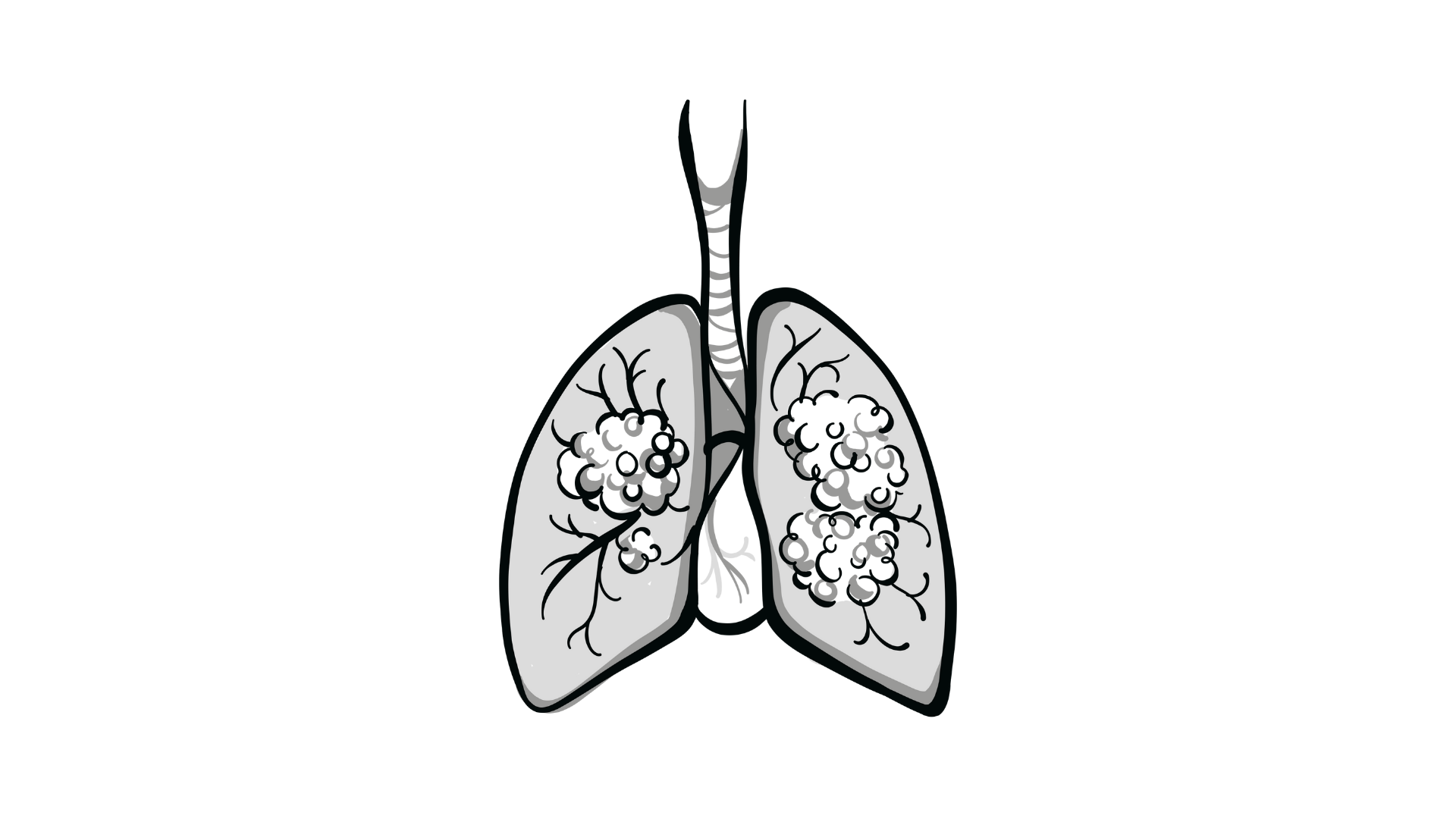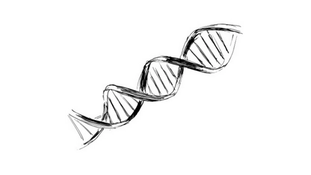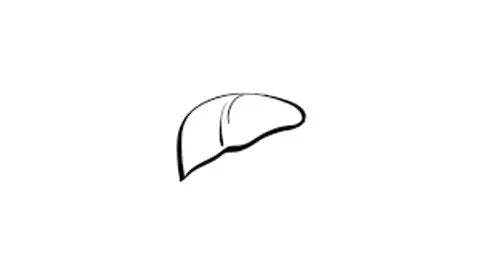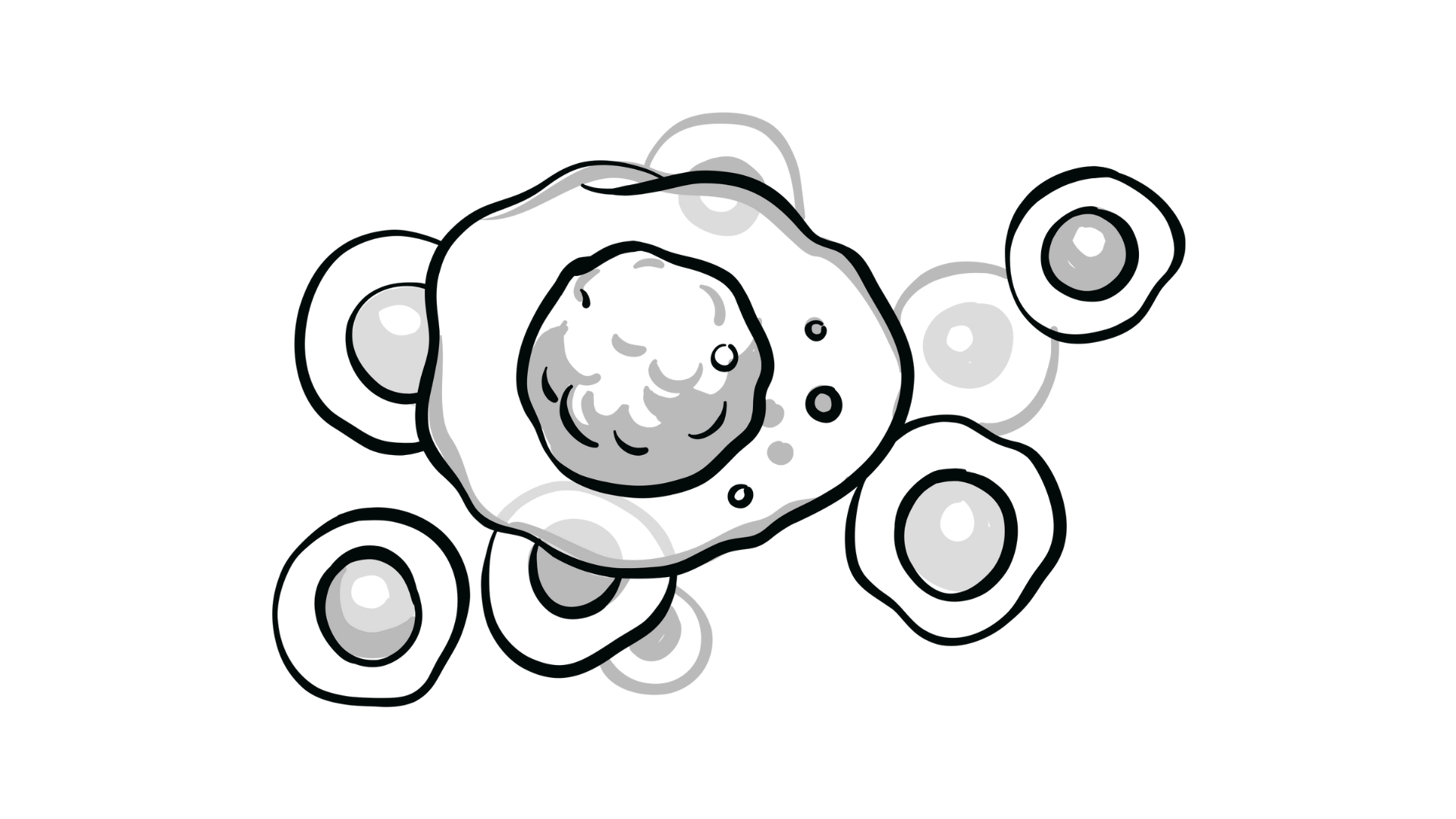Ornstein Discusses TKI Dose Interruption and Discontinuation in Combination RCC Therapy
During a Case-Based Roundtable® event, Moshe Ornstein, MD, MA, discussed dose modification approaches for patients receiving combination immunotherapy/tyrosine kinase inhibitor therapy for advanced renal cell carcinoma.

Moshe Ornstein, MD, MA
Genitourinary Medical Oncologist
Cleveland Clinic Taussig Cancer Institute
Cleveland, OH

EVENT REGION New York & Pennsylvania
PARTICIPANT LIST Santosh Kumar, MD | Philip Friedlander, MD | Le Wang, MD | Daniel Efiom-Ekaha, MD | Nelson Yee, MD | Ilya Blokh, MD
ORNSTEIN: Your patients are [treated] on average between 7 and 18 months. The median progression-free survival with the immunotherapy [IO] plus TKI [tyrosine kinase inhibitor] is anywhere from [roughly] 16 months with axitinib plus pembrolizumab and cabozantinib [Cabometyx] plus nivolumab [Opdivo] to close to 24 months with lenvatinib [Lenvima] plus pembrolizumab.1-3 For those who selected 7 to 12 months [in the polling question], are they coming off the IO and TKI because of disease progression? Are they coming off one of them because of toxicity and staying on the other? Are they coming off earlier because of toxicity related to the TKI?
KUMAR: Toxicity is the factor where we have to either dose reduce with the TKI or stop it. If they’re having toxicities, I cut down the dose of cabozantinib. If they’re still having problems, I leave them on single-agent nivolumab, and some of my patients do fine. These are older patients. In the clinical trials, we had patients who were very fit. We don’t get those patients in the community [setting]. The patients have frailty [and] a lot of [health] issues. They don’t like having continuous toxicity, [such as] diarrhea. My average is close to 12 months. I have a few patients who are beyond 2 years, but not many.
ORNSTEIN: Most of these patients are going to have at least stable disease, because the disease control rate for all these regimens is over 90%. Once they have controlled disease, it’s tempting to dose reduce the TKI when they have toxicity, but if they’re still having the toxicity, stop it. We see a lot of that.
Does anybody else have a similar experience where patients got stable disease and 6 months [later], the TKI is becoming a real nuisance? Sometimes the patient says, “I’ve had enough of this. I’ll stay on my monotherapy pembrolizumab…but I don’t want to be bothered with the TKI.”
FRIEDLANDER: There is a subset of patients in which the patient doesn’t want to dose reduce and just wants to stop. I try to dose reduce first to try to keep a patient on [the therapy], or maybe give them a break and then restart with a dose reduction when the patient’s feeling better.
ORNSTEIN: I see a lot of kidney cancer, and I’m fortunate to have advanced practice providers who are specialized in managing these toxicities. But for… smaller practices where patients have stable metastatic disease and they’re going to be on an immunotherapy, it’s easy to stop the TKI, and the patients are often on board.
There are some patients who [want to receive] the highest dose of the strongest drug, no matter what. But for some of these patients who are 75 years old and have other [health] issues, once their disease is controlled, they’re comfortable being on IO [alone]. We don’t know if they’re responding to the TKI and whether stopping the TKI will result in some progression. We don’t know if there’s something…synergistic when they’re being given together. I don’t know what the right thing to do is. If they were on an IO monotherapy, I would try to keep them on until the 2-year mark. If they were on a TKI monotherapy, I would also try to keep them on as long as I could.
I tell my patients, especially if they’ve been on therapy for 3 to 6 months already, that we can build in breaks. If this patient is on axitinib and pembrolizumab, axitinib’s half-life is somewhere between 2.5 and 6 hours. If they feel like they need to take a 2-day break every couple of weeks to reset their system, I want to empower them to do that to keep them on therapy longer. The same would hold true for the other combinations. Obviously, if the toxicity is intense up front, early dose reductions are going to be helpful.
WANG: Are there any trials to look at stopping the TKI at a year and continuing IO as a maintenance, and some of the approaches for other tumor types?
ORNSTEIN: There are some intermittent TKI studies out there. There was the STAR trial [ISRCTN06473203] that was a randomized [phase 2/3 trial].4 There was also a single-arm phase 2 study [NCT01499121] of sunitinib [Sutent].5 But these are TKIs without the IO. What we’ve learned from those experiences is that some patients…can take more extended breaks.
Then there was the phase 2 TIDE-A study [NCT04698213], which looked at axitinib and avelumab [Bavencio] and stopping the axitinib [after 36 weeks] and then restarting upon disease progression.6 It’s tricky with the IO/ TKI in combination. There’s a subset of patients for whom you can probably do it. But because we don’t know who those patients are, I tell my patients, “Let’s build in shorter breaks.” I think if they’ve been on therapy 4 to 6 months with controlled disease, you start out with a couple of days. You see how that goes, [then try] a longer break. You can play around with it, but I try to keep it in. There are some data out there to support longer breaks. Since we don’t know who those patients are, I use the longer break data to support the shorter breaks more regularly in practice.
DISCUSSION QUESTIONS
- Do you employ dose reduction or dose escalation when starting TKIs?
- Do you find overlapping adverse events (AEs) a challenge?
- How do you distinguish AEs as TKI vs IO related?
- More specifically, what AE(s) do you find most challenging? What is your approach toward management of that AE?
ORNSTEIN: The patient was started on axitinib and pembrolizumab. We started the patient at 5 mg twice daily [Figure7]. What’s your general approach to dosing when it comes to axitinib and pembrolizumab, or for that matter, if you use lenvatinib/pembrolizumab or cabozantinib/nivolumab? How do you go about your dosing? Do you usually start at the starting dose? Or do you start at a different dose?

EFIOM-EKAHA: I use cabozantinib/nivolumab for the most part, and it’s easier to start with a starting dose of cabozantinib at 40 mg daily…. For axitinib/pembrolizumab, 5 mg twice daily sounds reasonable. We used to talk about increasing the dose when the drug first came out, but I haven’t done that and not in combination. Lenvatinib/pembrolizumab is tricky trying to start at the starting dose, but I haven’t used that combination often in RCC.
ORNSTEIN: Dr Yee, you often use axitinib/pembrolizumab. Do you find yourself dose escalating or dose reducing?
YEE: It depends on patient factors, such as age, medical comorbidities, organ function, and ECOG performance status. If everything is good, then I start with the full dose, 5 mg twice a day. But if someone may have less optimal performance status or suboptimal organ function, I may start at a lower dosage.
ORNSTEIN: Is your first inclination when you’re managing toxicity to give breaks, or are you more inclined to dose reduce?
YEE: I try to manage the symptoms before I reduce the dose.
ORNSTEIN: We know what the classic immune-related AEs are, but then there are overlapping toxicities, [such as] diarrhea or elevated liver function tests [LFTs] that can be either from the IO or from the TKI. In your clinical practice, is there a specific overlapping toxicity that you find to be more challenging?
EFIOM-EKAHA: Diarrhea is a tricky [AE]. How do you separate IO-related diarrhea from TKI-related diarrhea? What do you stop first, what do you stop next, what do you reintroduce, and who gets steroids? We may be able to tell clinically by onset, type of diarrhea, and things like that, but it gets challenging.
KUMAR: Diarrhea and abnormal LFTs sometimes become confusing with cabozantinib/nivolumab.
ORNSTEIN: I agree. I think with all the IO/TKIs, it’s fairly similar. [When] somebody comes in with bilirubin of 6 mg/dL and aspartate aminotransferase and alanine aminotransferase in the 1000 U/L [range], that’s probably going to be an immune-related AE, and you probably need to start them on steroids.
But in general, for patients who come in with somewhat elevated LFTs, or grade 2 diarrhea, and they’re clinically stable, holding the TKI for a couple of days and monitoring is usually a good option. Whether it’s axitinib or cabozantinib, it’s very common for diarrhea to improve within a couple of days and LFTs to come down quickly, especially with axitinib with its short half-life. You monitor them over a few days. If you stop the TKI and the diarrhea gets better, it’s probably the TKI. If you stop the TKI and the diarrhea is not any better, it’s probably colitis from the immunotherapy. The same thing with the LFTs. This applies for many of the toxicities, even fatigue. You can sometimes see it get better [within] a couple of days of stopping the TKI.
In some ways, [potency and selectivity] are where these VEGF-TKI properties are different. Sunitinib and sorafenib [Nexavar] are the earlier-generation TKIs. Cabozantinib, pazopanib, and lenvatinib are second generation, and axitinib and tivozanib [Fotivda] are the third generation.
As the generations progress with the TKI, they become more selective and have more favorable pharmacokinetics…. The half-life for most of these agents is at least a day [Table8]. For some of them, like cabozantinib, it can be as high as 99 to [more than] 100 hours. One of the benefits of using axitinib…is the fact that it has such a short half-life.

If you’re not sure about these overlapping toxicities, your patients on axitinib/pembrolizumab stopping axitinib for a couple of days can help tease that out because their diarrhea or their fatigue or their LFTs should improve. Not all the VEGF-TKIs are the same. If you look at cabozantinib, it has 6 different targets. That’s a potential positive. The negative to that is longer half-life and more targets, maybe different toxicities as well. The purest of the VEGF-receptor selectivity is still going to be tivozanib and axitinib. The other ones are more multikinase inhibitors.
DISCUSSION QUESTION
- How does your approach align with the algorithm for the management of AEs associated with both axitinib and pembrolizumab?9
ORNSTEIN: This strategy applies not just to axitinib/ pembrolizumab but to cabozantinib/nivolumab as well and to lenvatinib/pembrolizumab, where if it’s a grade 1 toxicity, you can probably just continue both agents. If it’s a grade 2 toxicity here, you hold axitinib or the other TKI for a couple of days and continue the IO. If there’s improvement, you can dose reduce, or you can consider an intermittent schedule. If there’s no improvement, then you’re now worried that it is an immune-related AE [irAE], and you would hold the immunotherapy and start steroids. If they [come in] with a grade 3 or 4 AE, there’s no time to hold for a couple of days. You [should go] right to steroids.
This is the strategy of seeing how long I can keep patients on therapy. The way I’m going to keep them on therapy is by managing their toxicity. The way to help with that is to optimize figuring out where that toxicity is coming from.
FRIEDLANDER: What’s your threshold for a liver biopsy, colonoscopy, or sigmoidoscopy and biopsy of the mucosa to help [identify colitis, hepatitis or other irAEs] that are grade 3 or 4?
ORNSTEIN: If it is grade 3 or 4, I’m generally going to try to get the patient to an [endoscopy]. That’s where I’ll start the management, but I’ll refer them to a gastroenterologist and try to get them to a scope. Where I find that harder is in the grade 2 [AEs] that don’t get better right away [or] get a little better, but not much better. I don’t know if by continuing the immunotherapy, I’m going to cause them more harm. I might still continue the immunotherapy and then send them for a scope. If I’m able to quickly sort out which agent it is, then [I would not], but if I’m still on the fence, I’ll send them for a scope.
BLOKH: What dose of lenvatinib do you start with typically?
ORNSTEIN: With all these regimens, I start at the trial dose. With all these TKIs, there seems to be linear pharmacokinetics. The higher the dose, the higher the plasma level, and in theory, the higher the efficacy. In reality, you have some patients who have subtherapeutic plasma levels whose cancer responds beautifully and some patients with supratherapeutic [levels whose] cancer is resistant for some reason. I try to help my patients with lenvatinib/pembrolizumab [by] saying, “I’m going to start at a high dose. There’s a 70% chance you’ll need a dose reduction, and we’ll deal with it.”10
[It is] the same with all the IO/TKIs where [for] cabozantinib/nivolumab or axitinib/pembrolizumab, I say there’s a reasonable chance there’s going to be some toxicity. I usually tell them to give us the first couple of months to sort out the toxicity [and] the scheduling. I’m a big fan of after 2 or 3 months empowering the patients to say they feel they need a 2-day break from axitinib or a 3-day break from cabozantinib every 2 to 3 weeks. Once we have a scan or 2 with stable disease, I feel like it’s fine to do that.
REFERENCES:
1. Plimack ER, Powles T, Stus V, et al. Pembrolizumab plus axitinib versus sunitinib as first-line treatment of advanced renal cell carcinoma: 43-month follow-up of the phase 3 KEYNOTE-426 study. Eur Urol. 2023;84(5):449-454. doi:10.1016/j.eururo.2023.06.006
2. Bourlon MT, Escudier B, Burotto M, et al. Nivolumab plus cabozantinib (N+C) vs sunitinib (S) for previously untreated advanced renal cell carcinoma (aRCC): results from 55-month follow-up of the CheckMate 9ER trial. J Clin Oncol. 2024;42(suppl 4):362. doi:10.1200/JCO.2024.42.4_suppl.362
3. Motzer RJ, Porta C, Eto M, et al. Final prespecified overall survival (OS) analysis of CLEAR: 4-year follow-up of lenvatinib plus pembrolizumab (L+P) vs sunitinib (S) in patients (pts) with advanced renal cell carcinoma (aRCC). J Clin Oncol. 2023;41(suppl 16):4502. doi:10.1200/JCO.2023.41.16_suppl.4502
4. Collinson FJ, Gregory WM, McCabe C, et al. The STAR trial protocol: a randomised multi-stage phase II/III study of sunitinib comparing temporary cessation with allowing continuation, at the time of maximal radiological response, in the first-line treatment of locally advanced/metastatic renal cancer. BMC Cancer. 2012;12:598. doi:10.1186/1471-2407-12-598
5. Bjarnason GA, Knox JJ, Kollmannsberger CK, et al. The efficacy and safety of sunitinib given on an individualised schedule as first-line therapy for metastatic renal cell carcinoma: a phase 2 clinical trial. Eur J Cancer. 2019;108:69-77. doi:10.1016/j.ejca.2018.12.006
6. Iacovelli R, Ciccarese C, Buti S, et al. Avelumab plus intermittent axitinib in previously untreated patients with metastatic renal cell carcinoma: the Tide-A phase 2 study. Eur Urol. Published online March 22, 2024. doi:10.1016/j.eururo.2024.02.014
7. Inlyta. Prescribing information. Pfizer; 2022. Accessed July 16, 2024. https://tinyurl.com/z7rs9jp6
8. Fogli S, Porta C, Del Re M, et al. Optimizing treatment of renal cell carcinoma with VEGFR-TKIs: a comparison of clinical pharmacology and drug-drug interactions of anti-angiogenic drugs. Cancer Treat Rev. 2020;84:101966. doi:10.1016/j.ctrv.2020.101966
9. Grünwald V, Voss MH, Rini BI, et al. Axitinib plus immune checkpoint inhibitor: evidence- and expert-based consensus recommendation for treatment optimisation and management of related adverse events. Br J Cancer. 2020;123(6):898-904. doi:10.1038/s41416-020-0949-9
10. Motzer R, Alekseev B, Rha SY, et al. Lenvatinib plus pembrolizumab or everolimus for advanced renal cell carcinoma. N Engl J Med. 2021;384(14):1289-1300. doi:10.1056/NEJMoa2035716

Enhancing Precision in Immunotherapy: CD8 PET-Avidity in RCC
March 1st 2024In this episode of Emerging Experts, Peter Zang, MD, highlights research on baseline CD8 lymph node avidity with 89-Zr-crefmirlimab for the treatment of patients with metastatic renal cell carcinoma and response to immunotherapy.
Listen
Beyond the First-Line: Economides on Advancing Therapies in RCC
February 1st 2024In our 4th episode of Emerging Experts, Minas P. Economides, MD, unveils the challenges and opportunities for renal cell carcinoma treatment, focusing on the lack of therapies available in the second-line setting.
Listen









